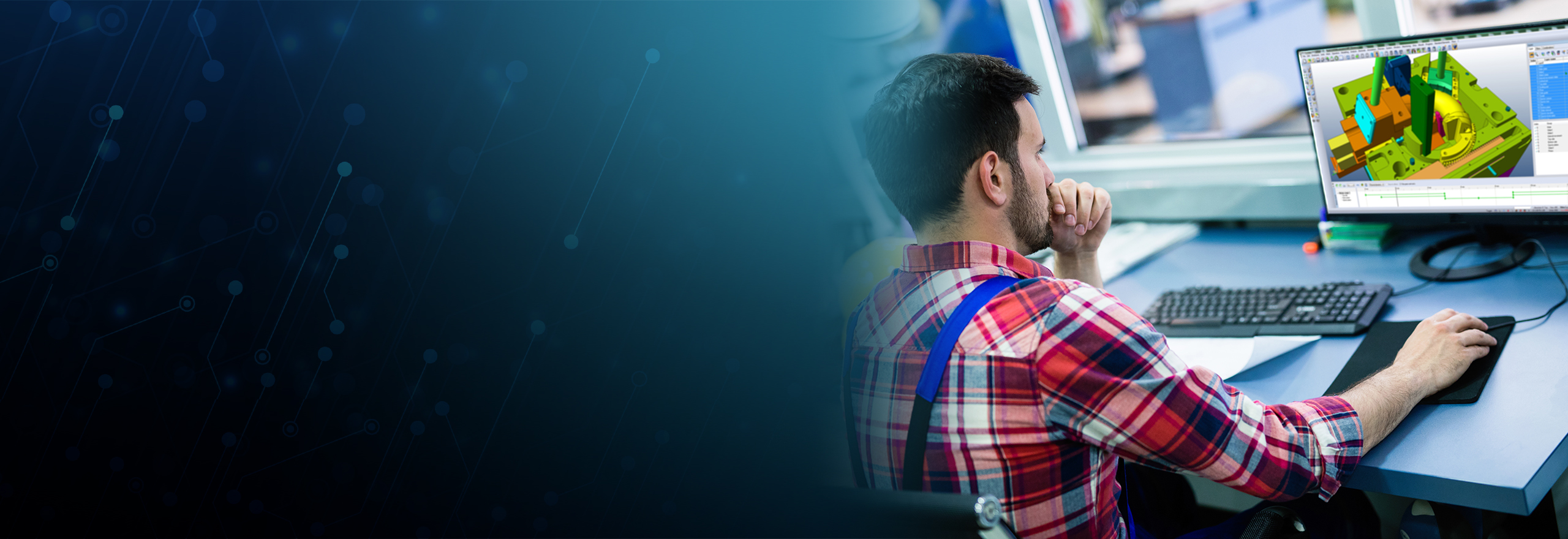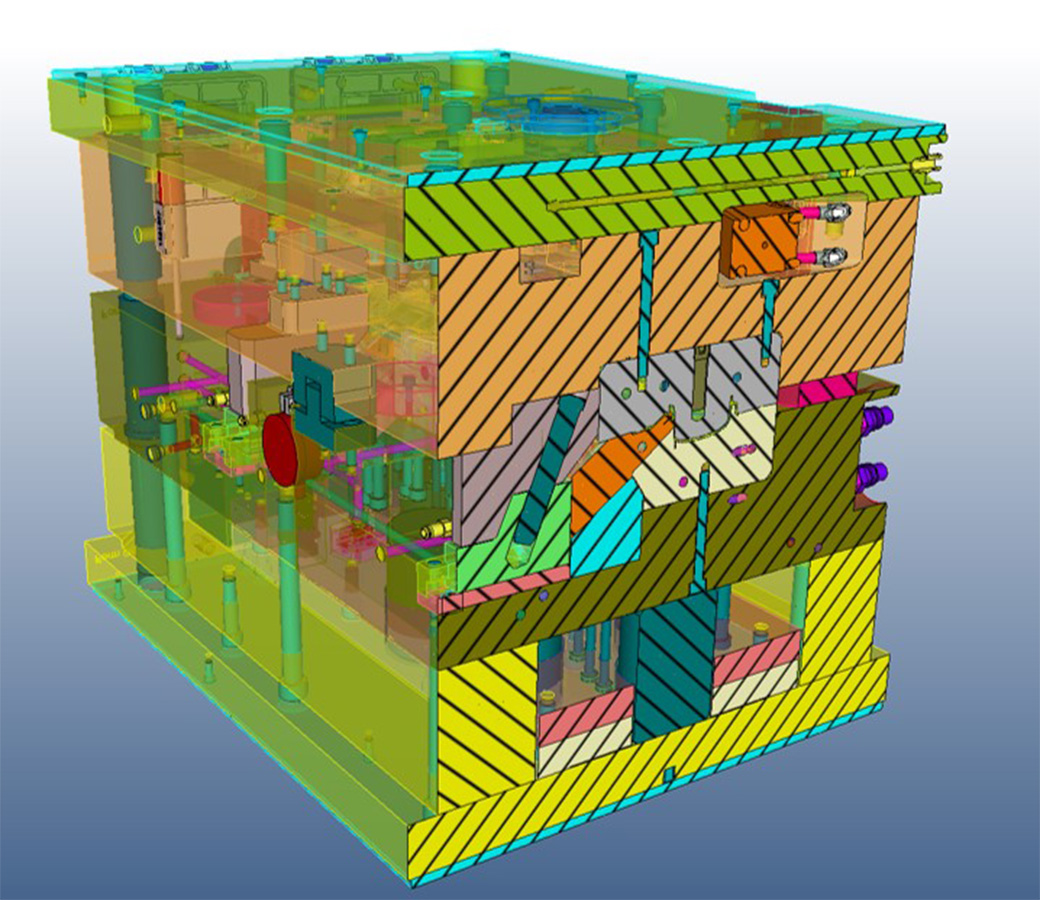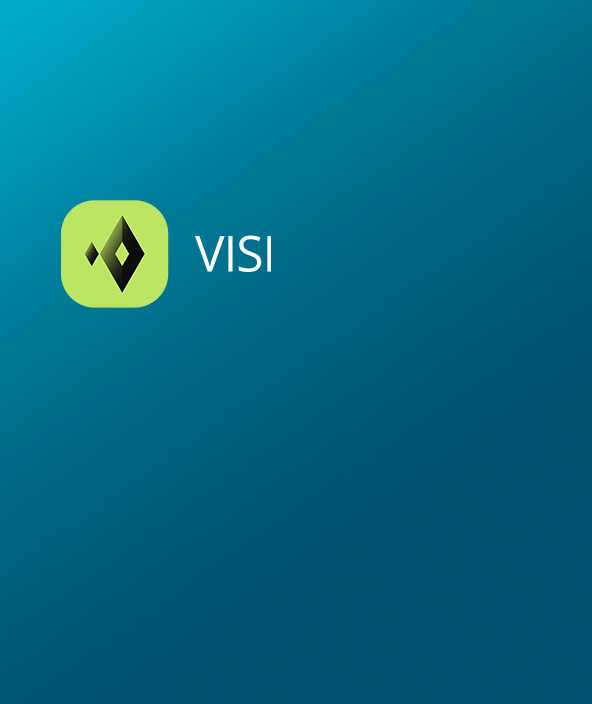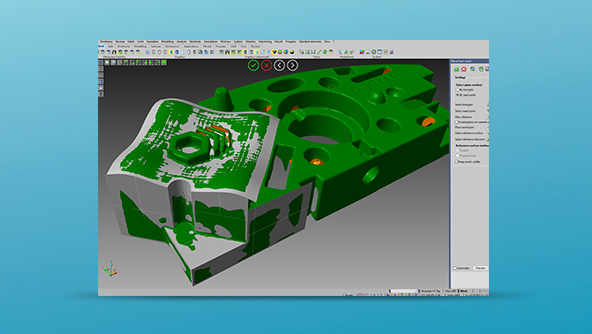Features at a glance:
- Easy to learn intuitive interface
- Extensive CAD interfaces
- Industry standard Parasolid® kernel
- Combined wireframe, solid and surface modelling
- Solid and surface Boolean operations
- Surface repair and analysis
- Edge tolerance manipulation
- Powerful blending
- Intelligent model deformation
- Fast rendering and texture mapping
- Mechanical curve construction
- Associative tool detailing
- Automatic B.O.M. creation.
True hybrid modelling
VISI provides a dynamic structure from where it is possible to work with either solid, surface, wireframe or a combination of all three without any restrictions. Solid modelling has become a fundamental cornerstone of design but is often limited to prismatic or basic geometry. Solid modelling commands include Boolean technology such as unite, subtract, extrude, revolve, sweep, cavity, intersect and hollow. Surfacing technology however provides a different set to tools and techniques for more organic, free-form geometry creation. Surface modelling functions include ruled, lofted, drive, sweep, n-sided patch, drape, tangent, draft, revolved and piped surfaces. These modelling commands combined with advanced surface editing make it easy to heal imported geometry or construct the most complex 3D data.
Advanced Modelling - Deformation
Advanced Modelling provides technology that will benefit all users in every industry sector. The Advanced Modelling tools are capable of deforming geometry while maintaining model integrity and holding curvature up to G4 constraints. This is particularly important for parts of high gloss (black, white, chrome) or that have aerodynamic requirements. Model editing includes bending, twisting, stretching and deformation, which allows the CAD operator to define the start and end geometrical conditions to drive any model change. Practical applications include springback for sheetmetal, product design changes and geometry healing.
Kinematic Simulation
The kinematic options include constraints to simulate the physical movements of gears, gear racks and rails. The motion study simulation tools allow the user to define timelines which control the start and end movement cycles for various groups of components. The physical interaction of model geometry can be detected and the results of complex mechanisms validated - ideal when checking for potential collisions with slides, cams and lifters.
Surface repair and editing
Small gaps between surfaces on imported models can be automatically healed preventing the time consuming process of rebuilding very small surface patches. Where surfaces are corrupt or missing VISI will automatically create the edge curve geometry making it easy to rebuild new faces using the comprehensive surfacing suite. To ensure the new surfaces are within tolerance, the new and the old surfaces can be compared to check for min/max distance and curvature deviation. Closing a surface model to produce a solid body eliminates construction problems later in the design process and immediately brings the benefits of solid modelling to the user. The ability to seamlessly switch between solid and surface technology provides unlimited freedom, ensuring the user can work with difficult CAD data.
Powerful blending
Constant radius, variable radius, disc, hyperbolic and elliptical blends can be constructed directly onto a solid model. Blends can be propagated along tangent edges to quickly sweep across a component. For very complex blending conditions or when working with inconsistent data, blend faces can be constructed as surfaces in an untrimmed state providing greater flexibility. Trimming is easy using either wireframe curves, edge geometry or existing faces.
Full range of 3D curves and split line curves
Create a theoretical split line curve or construct 3D curves including iso-parametric, cross section, helix, ellipse, spiral, hyperbolic and other mechanical curves. Advanced curve editing provides the ability to force tangency / periodicity, move control points, join or extend curves. Combined curve reprocessing allows multiple command combinations to greatly simplify the process of creating high quality curve geometry for surface construction, trimming or machining. Ease of use
Simple menu and icon commands with context sensitive on line help make it quick and easy to start using VISI. Dynamic rotation, zoom and pan, together with programmable function keys and mouse buttons help speed up the operation of the software. Unlimited undo and redo operations with user definable bookmarks enable the designer to move backwards and forwards throughout the design process. Multi layer and multi origin control with user definable color pallets and line styles makes it easy to review, create and work with very complex designs. All information is stored in a single file providing easy access and reducing the burden of data management. Managing one session of the software with all the components available for editing at the same time provides much greater flexibility. Super fast rendering, texture mapping and dynamic sectioning make it easy to visualise CAD files and large assemblies.
Automatic creation of 2D views
A complete set of 2D detailed drawings can be generated directly from the 3D model. This includes fully editable 2D and isometric sections views, automatic dimensioning and hole type and position tables. Individual details can be created from any component in the assembly and displayed as a mixture of 3D rendered and 2D drawings. Any standard catalogue component will have the correct detail representation within a section view. A change in the 3D model will result in a modification to the 2D view along with any fully associative dimensions. Parts list table items and their respective balloon references can be added to the drawing using dedicated assembly management tools.
Manufacturing modules
All the VISI applications run in one easy to use environment with knowledge based modules available for mould tool and progressive die design. Once the tool design is complete, machining of plates can be completed using feature recognition; drilled hole features and apertures are automatically selected with the correct drilling cycles and 2D milling routines applied. For 3D forms, mould cavities or forming stages on a progressive die, VISI Machining will create the toolpaths directly on the model incorporating conventional, high speed and 5 axis toolpaths. Keeping the model within the same product environment throughout the entire project, from design to manufacture will guarantee data consistency and greatly smooth the design process.
Due to the integrated nature of VISI, manufacturing of individual plates can be completed using feature recognition. Drilled hole features and apertures are automatically selected with the correct drilling cycles and 2D milling routines applied. For more complex forms VISI Machining can be used to generate both conventional and HSM cutting toolpaths. Complex punch apertures and the corresponding solid punches are easily manufactured with seamless integration to Wire EDM.
-
CAD import interfaces
-
CAD export interfaces








